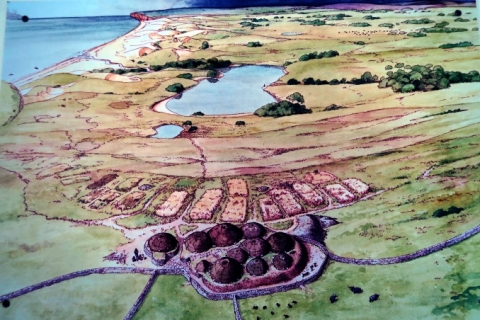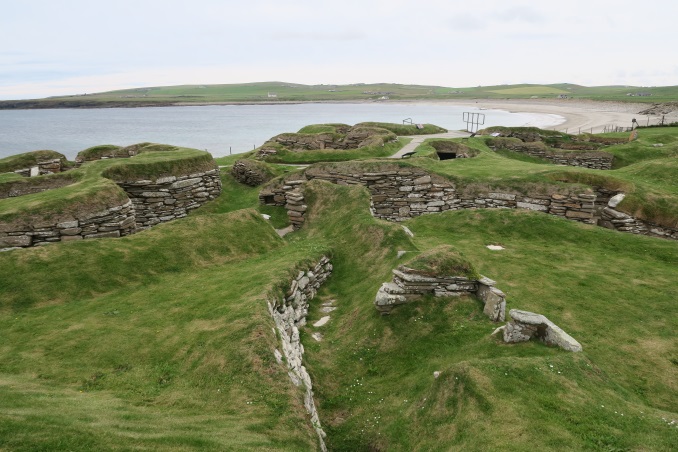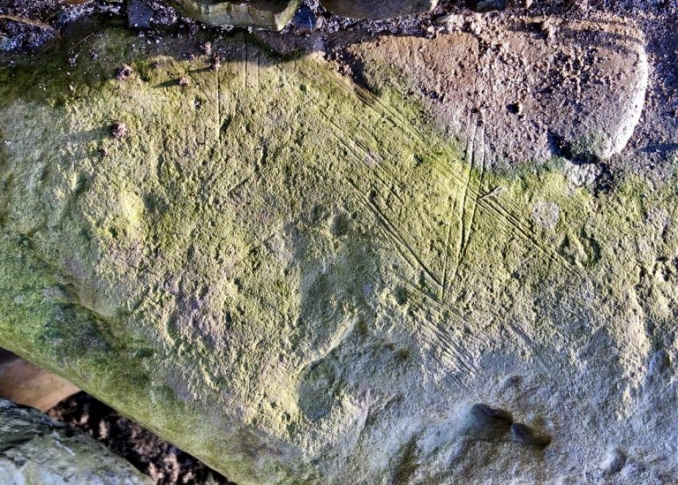Possible discovery of another Skara Brae like Neolithic settlement in Orkney

Orkney (Scottish Gaelic: Arcaibh. Old Norse: Orkneyjar. Norn: Orknøjar) is an archipelago made up of 70 islands, 20 of which are inhabited, that lie 10 miles (16 km) from the coast of Caithness (Scottish Gaelic: Gallaibh) in northern Scotland. The islands have been inhabited for at least 8,500 years. There are a number of world famous prehistoric sits on the islands. Including Knap of Howar, a Neolithic farmstead on the island of Papa Westray, which dates from 3500 BC as well as the village of Skara Brae, Europe's best-preserved Neolithic settlement, believed to have been inhabited from around 3100 BC. Other remaining sites from that era include the Standing Stones of Stenness, the Maeshowe passage grave, the Ring of Brodgar and other standing stones.
There is now growing excitement that archaeologists may have discovered another similar type of Skara Brae settlement around half a mile from the world-famous Neolithic village. Skara Brae is one of the most remarkable archaeological sites in the world. It had remained hidden for centuries until during the winter of 1850 a severe storm lashed the islands including the largest island in the group called Mainland. Along with a combination of some very high tides the settlement on the Bay of Skaill started to be uncovered. It has, however, long been thought that more Neolithic settlements may have existed in the coastal area surrounding Skara Brae.
Now, almost 170 years later, coastal erosion may have uncovered a neighbouring settlement. Deer antlers, a boar tooth, a cattle jawbone and a large decorated stone have also been discovered. A spokesman for the Archaeology Institute at University of Highlands and Islands, Sigurd Towrie, said the finds “suggest there is another settlement at the Bay of Skaill, one that, from previous environmental sampling, is likely to be 4,000 to 5,000 years old”. He said: “If this is the case, and based on the scale of the eroded section, we may well be looking at a Neolithic/Bronze Age site on a par with Skara Brae, albeit one that is now disappearing at an alarming rate.”
The large decorated stone discovered on the new site appears to be marked with a pair of incised triangles and a series of rectangular bands running across the surface. Dr Antonia Thomas, the Archaeology Institute’s rock art specialist, confirmed the find was potentially a carved stone, one with designs similar to those recorded at Skara Brae. The area is under serious threat from coastal erosion and the Institute plan to continue to carefully monitor the extent of the erosion and act as an when necessary. However, experts warned the new Neolithic site is 'disappearing at an alarming rate', so action needs to be taken to record details of the site for the future.
Image above: artist impression of Skara Brae as it would have been.
Images below. Skara Brae site now. Plus new carved stone found at new site on the Bay of Skaill courtesy of Archaeology Institute at University of Highlands and Islands.







